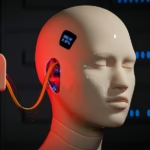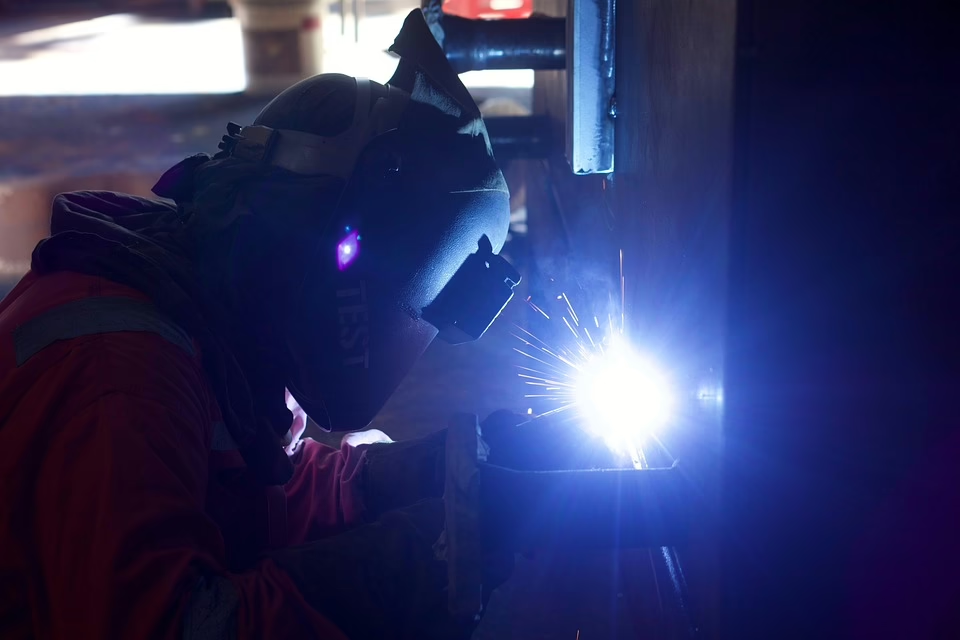Mechatronics Engineering: Merging Mechanics, Electronics, and Software for a Rewarding Career
Introduction
In today’s technology-driven world, the integration of different engineering disciplines is more critical than ever. Mechatronics engineering stands at the forefront of this integration, combining mechanics, electronics, and computer science to create sophisticated automated systems and devices. This article delves into the fundamentals of mechatronics engineering, its applications, and the career opportunities available in this dynamic field.
Definition of Mechatronics Engineering
Mechatronics engineering can be defined as an interdisciplinary branch of engineering that focuses on the integration of mechanical engineering, electronics, computer engineering, and control engineering. The goal is to design and create intelligent systems that can perform tasks autonomously or with minimal human intervention.
Historical Background
The origins of mechatronics can be traced back to the mid-20th century when technological advancements began to merge mechanical systems with electronic control. The term “mechatronics” was first coined in Japan in the late 1960s. Since then, the field has rapidly expanded, driven by innovations in robotics, automation, and smart technologies.
The Components of Mechatronics
Mechatronics consists of several components, including:
- Mechanical Systems: The structural aspects of machines, including frames, gears, and motors.
- Electronics: The circuits and components that facilitate control and signaling.
- Control Systems: Algorithms and software that govern the behavior of mechatronic systems.
- Sensors: Devices that measure physical quantities (e.g., temperature, pressure) and provide feedback for control.
- Actuators: Components that perform actions based on signals received from control systems.
Educational Pathways in Mechatronics Engineering
Degree Programs
To pursue a career in mechatronics engineering, individuals typically need a bachelor’s degree in mechatronics engineering or a related field such as mechanical engineering, electrical engineering, or computer science. Many universities offer specialized programs that provide a comprehensive education in all aspects of mechatronics.
Key Subjects and Skills
Students in mechatronics engineering learn a variety of subjects, including:
- Mechanical Design: Understanding the principles of mechanical systems and design methodologies.
- Circuit Theory: Knowledge of electronic circuits and their applications in mechatronics.
- Programming: Proficiency in programming languages such as Python, C++, and MATLAB for developing control algorithms.
- Control Theory: The study of how to influence the behavior of dynamic systems through feedback and control mechanisms.
Advanced Studies and Certifications
Many mechatronics engineers choose to further their education through master’s degrees or certifications in specialized areas such as robotics, automation, or artificial intelligence. Advanced degrees can provide deeper knowledge and open doors to research and development roles.
Applications of Mechatronics Engineering
Mechatronics plays a significant role in various industries, taking the lead in innovations that improve efficiency and productivity. Here are some key applications:
Robotics
Robotics is perhaps the most recognized application of mechatronics engineering. Mechatronic systems are integral to both industrial and service robots, which perform tasks ranging from assembly line operations to personal assistance. Engineers in this field design robots with complex motions, capable of performing intricate tasks with high precision.
Automation
In manufacturing and process industries, mechatronics engineering drives automation solutions that enhance production efficiency. Automated systems can increase output while reducing labor costs and human error. This application is particularly relevant in industries such as automotive, food and beverage, and electronics manufacturing.
Automotive Industry
Modern vehicles are increasingly equipped with mechatronic systems that enhance safety, performance, and comfort. Examples include anti-lock braking systems (ABS), electronic stability control (ESC), and adaptive cruise control. Mechatronics engineers play a pivotal role in designing and improving these systems.
Aerospace
The aerospace industry relies heavily on mechatronics for avionics, flight control systems, and unmanned aerial vehicles (UAVs). Mechatronics engineers work on designing and maintaining systems that ensure safety and efficiency in aviation.
Healthcare
In healthcare, mechatronics is revolutionizing medical devices and robotic surgery. Engineers develop advanced imaging systems, prosthetics, and robotic-assisted surgical tools that improve patient outcomes and reduce recovery times.
Smart Home Technology
The rise of the Internet of Things (IoT) highlights the growing role of mechatronics in smart home technology. Devices such as smart thermostats, security systems, and home automation solutions integrate mechatronic systems to enhance user convenience and energy efficiency.
Career Opportunities in Mechatronics Engineering
The interdisciplinary nature of mechatronics engineering opens up a diverse range of career opportunities. Graduates can pursue various roles, such as:
Mechatronics Engineer
As a mechatronics engineer, individuals work on designing and developing new products, improving existing systems, and troubleshooting issues. Responsibilities often include conducting research, performing simulations, and collaborating with teams across different engineering disciplines.
Robotics Engineer
Robotics engineers focus on creating robotic systems for various applications, including manufacturing, healthcare, and entertainment. Their work often involves designing kinematics, programming control algorithms, and testing prototypes.
Automation Engineer
Automation engineers specialize in designing and implementing automated systems that enhance operational efficiency. Their role may include programming PLCs (Programmable Logic Controllers) and developing integration strategies for various technologies.
Control Systems Engineer
Control systems engineers develop and implement control algorithms for dynamic systems. They work on optimizing system performance, stability, and responsiveness through feedback mechanisms and advanced control techniques.
Research and Development Engineer
Many mechatronics engineers find fulfilling careers in research and development, where they focus on innovating new technologies and improving existing systems. This role often requires a master’s or doctoral degree and may involve collaborating with academic institutions or industry partners.
Project Manager
With experience, mechatronics engineers can move into project management roles, overseeing engineering projects from conception to execution. This position typically requires strong communication and leadership skills, as well as a thorough understanding of engineering principles.
Skills Required for Mechatronics Engineers
Technical Skills
- Proficiency in Programming: Knowledge of programming languages relevant to control systems, software development, and data analysis.
- Understanding of Electronics: Strong grounding in electronic circuit design and analysis.
- Mechanical Design Skills: Ability to use CAD software for designing mechanical components and systems.
Soft Skills
- Problem-Solving: The ability to analyze complex issues and develop effective solutions.
- Team Collaboration: Being able to work effectively across multidisciplinary teams is essential in the mechatronics field.
- Communication: Strong verbal and written communication skills to convey technical concepts to non-technical stakeholders.
Future of Mechatronics Engineering
Emerging Trends
As technology continues to advance, the field of mechatronics is evolving. Some significant trends shaping its future include:
-
Artificial Intelligence (AI) and Machine Learning: The integration of AI into mechatronic systems enhances decision-making processes and automation. This trend is increasingly apparent in areas such as autonomous vehicles and smart robotics.
-
Internet of Things (IoT): The proliferation of connected devices is driving the demand for mechatronics engineers who can design systems that communicate and interact with one another seamlessly.
-
Sustainable Engineering: Increasing focus on sustainability is pushing mechatronics engineers to create systems that minimize waste and energy consumption while maximizing efficiency.
-
Advanced Manufacturing Techniques: Technologies such as additive manufacturing (3D printing) are being integrated into mechatronics, allowing for customized and efficient production methods.
Job Market Outlook
The job market for mechatronics engineers is promising, with continuous demand across various sectors due to ongoing technological advancements. Roles in automation, robotics, and AI are particularly sought after, presenting graduates with numerous opportunities.
Conclusion
Mechatronics engineering offers a unique and rewarding career path at the intersection of mechanics, electronics, and computer science. As the demand for innovative automated systems grows, this field continues to thrive, proving to be an exciting frontier for engineers. Those who pursue a career in mechatronics engineering will have a diverse range of applications to explore and will be at the forefront of technological advancements that shape the world. With continuous education and adaptability, mechatronics engineers can contribute to building the next generation of intelligent systems that enhance our daily lives.
References
This article provides an overview of the potential and capabilities inherent in mechatronics engineering. Those interested in exploring this interdisciplinary field are encouraged to pursue further study and remain abreast of industry trends and innovations.


























Add Comment